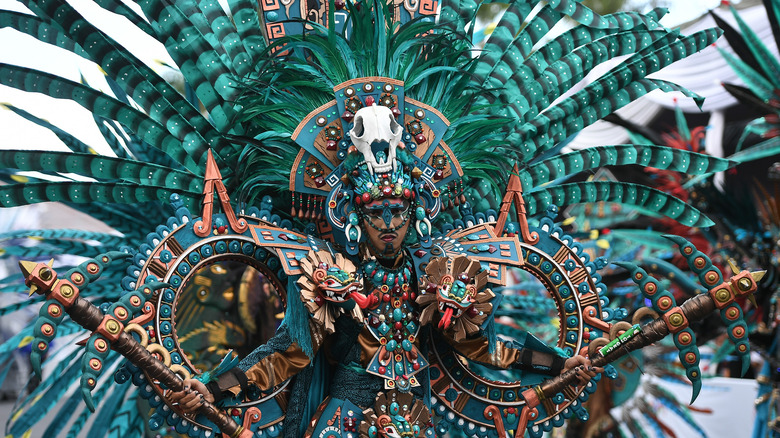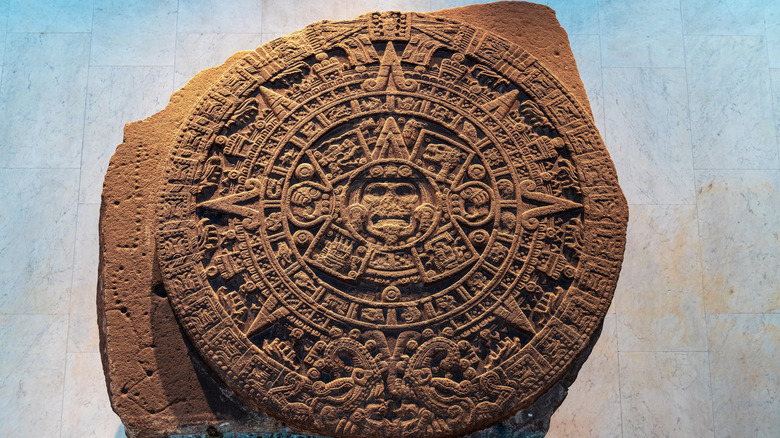Inside The Aztecs' Theory About Life After Death
The Aztecs were a Nahuatl-speaking civilization that dominated Mesoamerica for about two centuries until the arrival and subsequent conquest of the Spaniards in the early 16th century (via Christi Center). The Aztecs were advanced in mathematics, agriculture, and architecture, having built one of the most populated cities in the world at the time in Tenochtitlan and also developing a complex calendar system. It's no surprise that their religion and mythology were similarly complicated, and these beliefs influenced nearly every aspect of the Aztec lifestyle.
One's eternal fate in the Aztec religion was less determined by one's life and more determined by one's death. There were a variety of different realms, similar to the Christian Heaven and Hell, accessible based on how someone met their fate. Those who died in battle and sacrifice were said to have much more pleasant afterlives than those who died of illness, demonstrating the civilization's cultural respect for their warriors and human sacrifices.
Those who met a violent end had the best afterlives
According to Mexicolore, those who died in battle or sacrifice went to a paradise in the east where they would help lift the sun up every morning. Merchants who were killed on their travels joined these warriors. After four years, their souls would turn into hummingbirds and butterflies. On the other side, the souls of women who died in childbirth helped lower the sun in the west, in a similar paradise to their warrior brethren. Those who had their lives taken by lightning or drowning were said to have been chosen by Tlaloc, god of rain and storms, and resided in his lush, flowering realm.
The majority of Aztecs who died "normal" deaths didn't have a paradise to look forward to. They were sent down a four-year journey through the underworld to reach the deepest layer, the Land of the Dead. While not strictly meant as a punishment, the journey down was filled with difficult trials, only for the souls to reach a land far from paradise. It shows the Aztec's respect and reverence for those who met their fate head-on, and although this might give the impression of a harsh, unforgiving violent culture, Aztec poetry has been discovered that gently laments the fallen with a sensitive, respectful way of remembrance.

